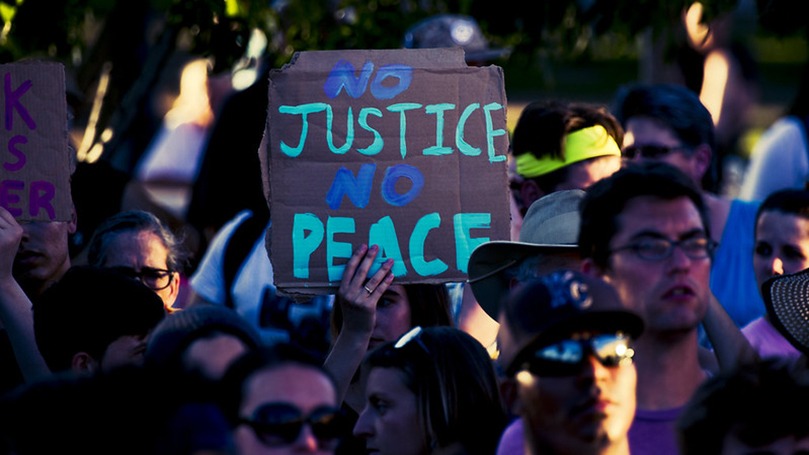
A jury in Kenosha Wisconsin on November 19 acquitted Kyle Rittenhouse, who was 17 years old when he murdered two unarmed men and wounded a third. Rittenhouse was participating in armed groups of “volunteers” to “aid” the police and “protect property” from people protesting the shooting of Jacob Blake. Blake was an unarmed African American man shot seven times by police as he got into his car and sought to take his children away following a domestic disturbance with the children’s mother.
Globally, this was seen as yet another example of American racism, or “systemic racism,” the term which the Black Lives Matter Movement brought into the mass media. In the U.S., conservatives of all kinds continue to contend that racism had nothing to do with the Rittenhouse shooting, since all three of the men shot by Rittenhouse were white.
Liberals and progressives of all kinds have blamed racism for the decision and the complicity of both the Kenosha police and the larger judicial system in bringing about an acquittal, which, given the context in which the killings took place, made Rittenhouse’s self-defense argument absurd. There’s no doubt that, had Rittenhouse been an African American man carrying a weapon at a conservative rally, the self-defense law on which Rittenhouse’s acquittal was based would not have been considered by a nearly all-white jury. Indeed, a trial would not have occurred because of the likelihood that an armed Black man would be shot dead by the police.
Finally, the reactionary and neofascist forces inside and outside the Republican Party have hailed Rittenhouse as a “hero” and a model. This is reminiscent of the praise accorded Nazi storm troopers who were either acquitted or given short sentences for their crimes during the Weimar Republic.
How should we Communists, Marxists of all kinds, and the broad left look at these events, and what should we call for?
As a historian let me present my views to our readers. Armed vigilante groups have a long history that includes attacks on workers’ movements and especially racist oppression and repression. Before the Civil War, the number of official police was small because the slaveholder class did not want to pay for them. Slave patrols were widely used to capture escaped slaves, especially after 1831, when Nat Turner’s rebellion, the most important slave rebellion in U.S. history, terrified the slaveholder class.
Abolitionists in the South were often driven out by such patrols, and their homes burned. In the North, armed vigilantes, often supported by wealthy merchant capitalists and bankers, attacked abolitionist newspapers and mobbed and sometimes murdered abolitionist activists.
After the Civil War, the KKK in effect fought a guerrilla war of terror and murder to restore as much as they could the defeated slaveholder confederacy. It is important to remember that, while their primary targets were former slaves fighting for citizenship rights, they also focused their attacks on Southern whites who supported emancipation, whom they called “scalawags.” Northerners working for the Freedman’s Bureau, the first government social services agency in U.S. history, which sought to aid the former slaves in their transition to citizenship and freedom, were special targets. These Northerners were called “carpetbaggers” by the Klan terrorists.
The century following the Civil War saw the defeat of the struggle to democratize the former slave states and the establishment — with the support of the federal government — of a system of segregation and disenfranchisement of Blacks, called Jim Crow. This turned the former slave states, a largely underdeveloped region, into a center for a reserve army of cheap labor, both white and Black.
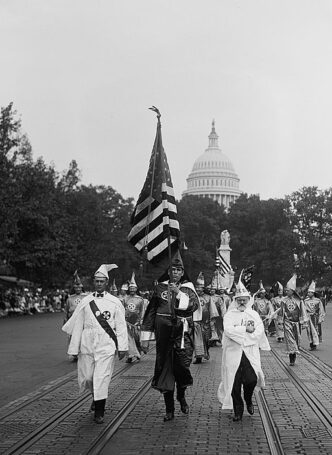 The Klan and its many imitators continued their acts of terror, including lynching and murder, often with support of local police and judiciary. As the Reverend Fred Shuttlesworth, a leader of the Southern Christian Leadership Conference along with Dr. Martin Luther King Jr. would say in the late 1950s, the police and the Klan were often the same people.
The Klan and its many imitators continued their acts of terror, including lynching and murder, often with support of local police and judiciary. As the Reverend Fred Shuttlesworth, a leader of the Southern Christian Leadership Conference along with Dr. Martin Luther King Jr. would say in the late 1950s, the police and the Klan were often the same people.
The Klan is not a relic of history. It operated as an armed force through the 1960s, and individual Klansmen committed bombings, shootings, and murders in the 1970s and 1980s. Today, about 30 independent Klan chapters are scattered across the country, according to the Southern Poverty Law Center.
Nor were these armed “volunteer” vigilante groups used only to maintain a racist power structure. With the rapid industrialization that followed the Civil War, they were recruited by factory owners and corporations to attack strikers and were often “deputized” by local police and politicians to do their dirty work. In the 1930s, the novelist John Steinbeck famously called them “pool room patriots” and portrayed them as auxiliaries to police brutality in his classic novel, The Grapes of Wrath, which dealt with white tenant farmers fleeing the Dust Bowl in the midst of the Great Depression.
In 1964, as the most important Civil Rights Act of the 20th century was enacted, three civil rights workers who were engaged in the voter registration campaign known as Mississippi Summer — Andrew Goodman, Michael Schwerner, and James Chaney, two white, one Black — were murdered by Klan killers with the knowledge and complicity of local authorities. In this case and other high-profile racist murders, it was decades before there was even a semblance of justice.
“Law-and-order” atmosphere
In the late 1960s, as the uprisings in the Watts section of Los Angeles, Newark, Detroit, and other cities occurred, right-wing political groups calling themselves “minute men” often appeared and engaged in their own violence in the name of law and order. Richard Nixon as a presidential candidate and later as president appealed to such groups with his “law and order” rhetoric and appealed to a “silent majority” that opposed both the tactics and beliefs of the militant social movements of the 1960s.
Beginning with the Nixon administration, the federal and state governments greatly increased the number of jails and prisons in the U.S. and the number of inmates in those prisons, so much so that analysts began to see a “prison industrial complex” coming into existence by the early 21st century. Fueled by Nixon’s “war on drugs,” the “three-strikes laws” of the 1990s, and the growing privatization of prisons, prison populations jumped by 700% between 1972 and 2009; now, more than 2 million people are imprisoned in jails and prisons, and the U.S. has the highest per capita rate of imprisonment in the world. During the crack epidemic of the 1980s and 1990s, sentencing disparities for possession of less-expensive “crack” versus cocaine led to the disproportionate imprisonment of African Americans.
Examples of police brutality also proliferated. The number of incidents was not necessarily greater than in the past, but the advances made by the civil rights movement made it much more likely that police violence would be reported in the press and on television.
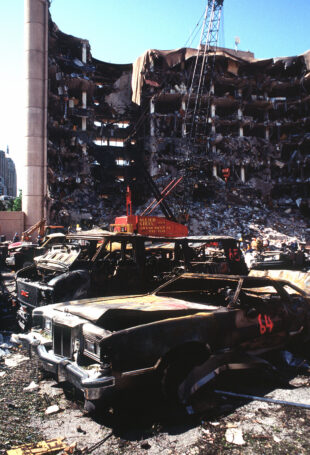 With Ronald Reagan’s election to the presidency, supported by a well-funded “new right” that used religion as a cover for its politics, a wide variety of militia groups came into existence, some engaging in terror and murder against Blacks, Jews, and other targeted groups. With impunity they established “compounds” in selected areas of the countryside to train recruits in weapons use. They were largely coddled and protected by conservative politicians until they committed heinous crimes, including armed robberies and assassinations. The right-wing terrorist attack on the Murrah Federal Building in Oklahoma City in 1995 compelled the FBI and other police agencies to take such armed vigilante groups much more seriously.
With Ronald Reagan’s election to the presidency, supported by a well-funded “new right” that used religion as a cover for its politics, a wide variety of militia groups came into existence, some engaging in terror and murder against Blacks, Jews, and other targeted groups. With impunity they established “compounds” in selected areas of the countryside to train recruits in weapons use. They were largely coddled and protected by conservative politicians until they committed heinous crimes, including armed robberies and assassinations. The right-wing terrorist attack on the Murrah Federal Building in Oklahoma City in 1995 compelled the FBI and other police agencies to take such armed vigilante groups much more seriously.
However, in the aftermath of the September 11th attacks, the focus of the fight against terrorism shifted outward, against alleged “foreign terrorist” organizations and individuals. This was enabled by the Patriot Act, which increased federal police power, and the creation of the Department of Homeland Security, a massive agency whose initial 2002 budget ballooned from $20 billion to $52 billion today. Little was done to curb or even investigate the rightist “militias,” even as they openly spread their ideologies on social media.
Donald Trump’s presidency aided and abetted these groups as no national administration ever had. Trump treated these neo-fascist groups in the same way Southern segregationist governors had long treated the KKK — repeatedly inciting through his demagoguery their violent acts and then issuing mild criticism of those acts. In 2017 in Charlottesville, Virginia, Klansmen and neo-Nazis marched to defend a statue of Confederate General Robert E. Lee; the “Unite the Right” rally resulted in violent attacks against those protesting the march, including the murder of a young woman. Trump stated that there were “fine people on both sides,” in effect supporting the white supremacists.
Trump also vilified and encouraged violence against protesters who opposed his call for mass arrests of undocumented workers and his stands on foreign policy and the environment. He has directed much of his animus toward the Black Lives Movement, claiming that they incite violence and symbolize hate.
Militias aside, individuals motivated by racism and white supremacy continue to commit horrific acts: In 2015 a white supremacist murdered nine African American congregants at a church in Charleston, South Carolina. In 2018 a neo-Nazi attacked a Jewish Synagogue in Pittsburgh, Pennsylvania, murdering 11 congregants; he had been active on ultra-right social media and was critical of Trump for “not doing enough” to deport illegal Mexican immigrants, whom he saw as part of a “Jewish plot” to destroy America. And in 2019 a racist fueled by anti-immigrant hysteria murdered 22 people at a Walmart in El Paso, a city with a majority Latino population. These are only a few of the hundreds of attacks by people espousing right-wing ideology documented by the Southern Poverty Law Center.
Trump’s crude identification of the police and the military as the solution to all problems provided support for these neo-fascist militias. Previously, these groups had denounced government’s power to do virtually anything — a sort of ultra-right anarchism where individual and group “freedom” was absolute regardless of the social consequences. Now they had a government with which they could identify, and they increasingly saw themselves as fighting with and for police and business forces threatened by social protests, much as they had through most of U.S. history.
These groups played a significant role in the failed January 6 coup to restore Trump to power. Even with some of their leaders and members facing prosecution and imprisonment for their actions, they continue to play a role, as they involve themselves in protests against vaccination mandates, attempts to reform the police, restrictions on the use of fossil fuels, and other issues.
The specifics of the Rittenhouse case
In August 2020, Jacob Blake, a 29-year-old African American, was shot seven times as he sought to drive away in his SUV with his children following a domestic dispute with his girlfriend. The May 2020 police murder of George Floyd had sparked protests throughout the world against racism and police brutality, most of them peaceful, as well as counter protests in support of police power by rightist and racist political groups. Most of the protests here and abroad were peaceful.
In the U.S., militia groups claiming to support the police and business owners traveled to the protests and often incited violence by brandishing their weapons. These groups, intelligence analysts note, define themselves as peacekeepers and use the violence they help incite to gain publicity for themselves. Mark German, a former FBI agent who worked undercover to expose neo-Nazi groups in the U.S., compared these groups to Hitler’s storm troopers: “Nazi thugs rallied where they knew they had political opposition — they could attack and get media coverage, and gain a reputation for being tough and scary.” Of the “peacekeepers,” he added, “You can’t just nominate yourself as a security provider.”
Before he came to Kenosha, Kyle Rittenhouse was part of a low-income family living a hand-to-mouth existence. These conditions are closer to those of the people, Black and white, who protested the shooting of Jacob Blake than they are to his right-wing supporters and their financial backers. Rittenhouse participated in police and fire department cadet programs, hoping to eventually become a police officer. He was “not strong or tough,” but he sought to identify with those who were — to become part of the hunters rather than the hunted in a society that marginalizes lower-strata workers and the poor. He portrayed himself that way on social media and even sent pictures of his attendance at a Trump rally in Iowa.
But this history does not excuse what Rittenhouse would do. He got his sister’s boyfriend to purchase an AR-15 assault rifle, a weapon that has repeatedly been used in mass shootings and is favored by militia groups. His mother drove him from his home in Illinois 20 miles to Kenosha where he joined older “peacekeepers” with military backgrounds, strutted around with his rifle, and enjoyed himself, according to videos. Then his fantasy turned real: he shot his rifle, and in confusion and fear he ran, shot and killed two unarmed men, and wounded another.
The police, rather than seeking to contain both the violent armed militia men and violent armed protesters, welcomed the militia “peacekeepers” as friends. They thanked them at various points and gave them water. They let Rittenhouse through as he tried to surrender to them and return home with his mother.
His acquittal, while it is seen throughout the world as a disgrace to both human rights and the rule of law, is unsurprising. The trial itself shocked onlookers while Judge Schroeder exposed his bias. He threw out the gun charge before the trial began (Wisconsin prohibits minors from possessing dangerous weapons, a misdemeanor), repeatedly insulted the prosecution, and barred the prosecution from calling the dead and wounded “victims” while allowing defense lawyers to call them “looters” and “arsonists.”
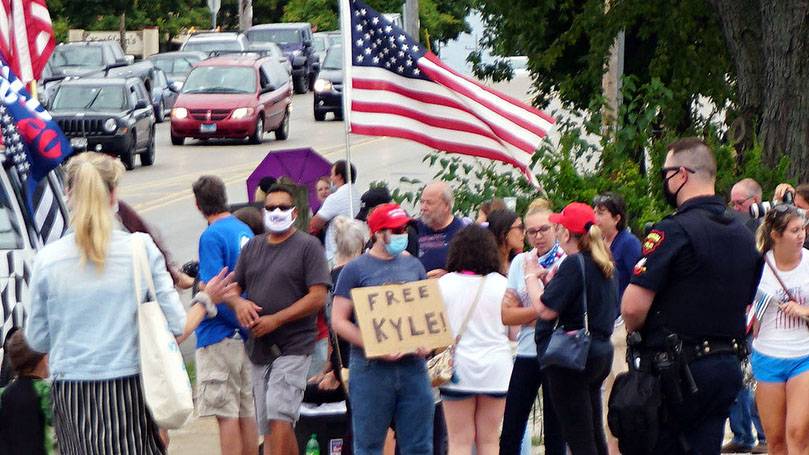
Almost immediately when the trial began, various celebrities of the ultra-right began to rally to Rittenhouse’s support and use him for their own purposes. Over $2 million was raised for his legal defense. T-shirts and other paraphernalia praising his actions were produced and distributed. He now enjoys celebrity status in the Republican right. Seeking the limelight since his acquittal, Rittenhouse has appeared on right-wing media like the website BlazeTV and Fox News. His celebrity status may have lifted him and his family out of poverty, itself a commentary on justice, equality, and the rule of law in the United States today.
The chill factor
The jury’s acquittal was an attack on the Black Lives Matter movement as much as the 1964 murder of the civil rights workers in Mississippi was an attack on the Civil Rights movement. It’s an attack on the First Amendment right of free speech and assembly. Not only do peaceful protesters fear the police but also the prospect of armed white supremacists descending on Black Lives Matter or other progressive marches. Whether this will cause progressives to think twice before attending a demonstration or arm themselves at protests, heightening tensions and the potential for more violence, remains to be seen.
What can and should be done
The families of Rittenhouse’s victims will likely file a civil suit against him based on wrongful death charges. But the government has a role to play, too: the Department of Justice (DOJ) should bring federal charges for civil rights violations and hate crimes against Rittenhouse. Congressman Jerry Nadler (NY) called for the DOJ to review the case, stating, “Justice cannot tolerate armed persons crossing state lines looking for trouble while people engage in First Amendment–protected protest.”
Then there is the question of militias and gun control. The Second Amendment of the U.S. Constitution was never intended to support private militias, only “well-regulated militias” representing constituted public authorities. The Minutemen at Lexington and Concord were loyal to the Massachusetts colonial legislature, which the British Empire had disbursed when they put Massachusetts under a military governor and martial law.
The “Proud Boys,” “oath keepers,” and other private militia groups can and must be disarmed and dispersed and their compounds eliminated.
As for gun control, the U.S. has by far the least effective gun control policy of any industrialized country and for that matter many underdeveloped countries. The Second Amendment to the U.S. Constitution establishing the rights of citizens to bear arms was, like the defense of “well constituted” militias, a response to the British martial-law government’s policy of seizing the arms of citizens. It never meant that duly constituted governments could not regulate the sale and ownership of guns.
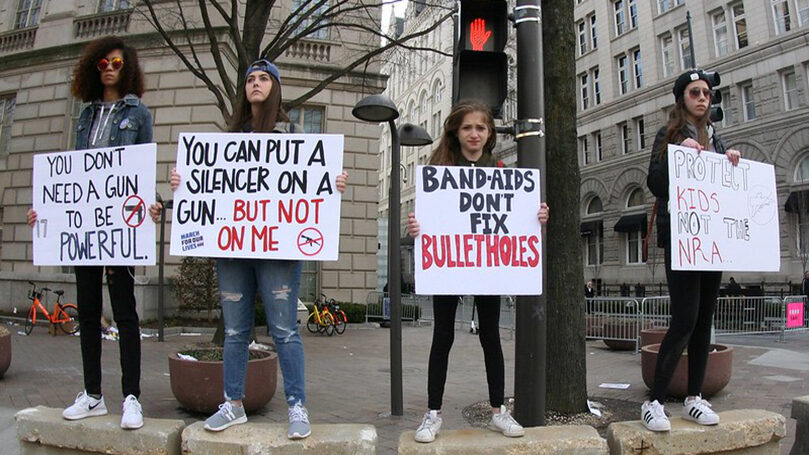
Also, the pistols and rifles in existence at the time of the U.S. Constitution were pre-industrial weapons firing one shot, difficult to reload, and with very limited accuracy. They were less effective than the bows and arrows used by Native American archers in the French and Indian War. Also, they were relatively expensive and not available to most citizens. The role of the National Rifle Association and gun manufacturers in maintaining our crazy quilt system of “gun control” is another example of monied special interests’ corrupting and controlling American politics.
Serious democratic restructuring of the police and the judiciary is necessary if these issues are to be effectively addressed. Community control of police departments is one of many solutions. More than “oversight,” community control means that “every police policy, every dollar spent on law enforcement, and every officer, chief, and superintendent should be subject to the will of the people, not the other way around,” according to the National Alliance Against Racist and Political Repression. Another solution is to break the connections between the police and the right wing. Police departments have historically harbored racists, but the infiltration of police departments by far-right groups has grown in recent years. Racists and white supremacists should not be hired as police.
Only a socialist society can create the social economic foundations to address the inequality and injustice that capitalism both creates and profits from. However, we should not be deterred in fighting for reforms to prevent events like the Kenosha killings from happening.
Major capitalist countries have effective gun control laws, and the numbers of citizens killed and wounded with firearms is a small fraction of what exists in the U.S. Armed private militias are outlawed in most countries, and their leaders and members sent to prison for acting in ways that are accepted in the U.S. Laws against racist defamations of minority groups exist in many nations, and free speech is understood to be both a right and a responsibility. While controlling police conduct is much more difficult, there are at least uniform training of police to respect the civil rights of citizens in many countries.
These are elemental social protections which we can and should demand and fight for at all levels of government now This can be done, and it must be done.
Images: No justice, no peace, Johnny Silvercloud (CC BY-SA 2.0); KKK march in Washington, DC, Wikipedia (public domain); Bombing of the Murrah Federal Building, Oklahoma, photo by Preston Chasteen, Wikipedia (public domain); Rittenhouse supporters, photo by Lightburst, photo cropped (CC BY SA 4.0); March for our lives rally, Vince Reinhart (CC BY-NC-SA 2.0).


 Join Now
Join Now